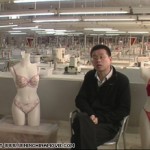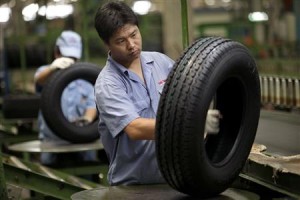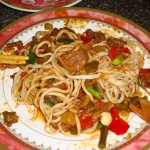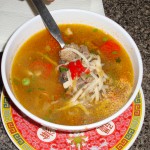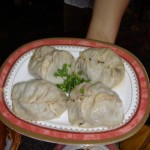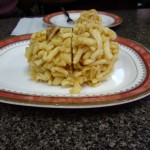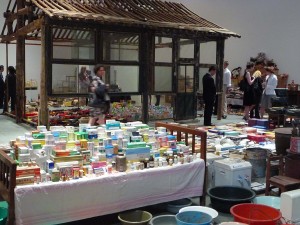Just For Fun: President Obama’s Itinerary to See the Real China
Susan Fishman Orlins, freelance writer and longtime China-watcher, offers some advice on where President Obama needs to go to see the real Beijing.
DEAR MR PRESIDENT: WHAT TO DO IN BEIJING
By Susan Fishman Orlins
Dear President Obama,
As I bike around Beijing this week, during a short trip to see my daughter who works here, I’ve been thinking about some local attractions you might enjoy during your visit. I’ve also been thinking about how the ratio of bicycles to automobiles appears to have flip-flopped from the first time I arrived in China, thirty years ago. When you inhale the acrid smell of motor vehicle fumes and view this smoggy city–as though through gauze or an organdy curtain, soiled with age–you may decide that you too would prefer getting around on a two-wheeler rather than waiting in traffic jams, adding to the pollution. You can rent a bike at any of several subway stations and drop it off at any of the others. Just be aware of the rule of the streets: the bigger you are, the more you have the right of way. At intersections, cars will turn from all four directions, seemingly at once, without slowing down.
I like starting off my stay here with a foot massage. Side by side in oversized, cushy club chairs with high backs that recline, you and President Hu Jintao can first soak your feet in a barrel of milk, herbs and Chinese medicine. Then, in the privacy of a room for two, you can watch CNN on the flat-screen TV or discuss human rights, while young men knead your shins and toes with Healthy Spa Life Cure Professor massage lotion.
Afterwards, you might want to buy some gifts for Malia and Sasha. Head to trendy Nanluoguoxiang, lined with coffee bars and boutiques and where you can pick up a couple of Oba-Mao t-shirts with your own image donning a red-star cap.
I suggest quickly making your way out of there through the crowds of Chinese yuppies and foreign tourists. To witness something of life as it has been here for decades (try to mentally delete all the cars), head south and turn into any hutong and lose yourself in the maze of narrow lanes lined with low courtyard houses with sloping tile roofs, most of which–unlike in earlier times–provide shelter for several families. Some hutongs are quieter than others, with maybe only a cat stealthily creeping along the edge of a courtyard wall and a few rusty bikes leaning below. Then you turn a corner and there unfolds a row of tiny, old shopfronts, many of which are selling dough in its endless forms: fried, flat, squishy, steamed, noodly. A bun–that looks like a large cream-colored ball you squeeze to exercise your hands–might be empty inside or filled with bean paste or minced pork. Or you can get dumplings floating in broth.
Hutongs are where I most like to watch the bustle. Watching the bustle is a typical Chinese activity; they call it kankan renao, literally look at bustle. I could steer you to the hutong where I talked to a baby and bought striped socks from her grandmother, while a guy in a hard hat working nearby secured a shelf I’d bought to the back of my bicycle with some electrical wire. But that would take away the fun of discovery. No matter which way you turn in these lanes, you’ll get a sense of community, especially for elderly folks, whereas at home in the U.S. my sense of life for the elderly is often one of loneliness.
In fact, when I asked a retired Chinese friend what she does all day, she replied, “Wanr,” which is Beijingspeak for play and means hang out. She hangs out in the park with her friends. Just north of Jingshan Park, you can experience an inviting “playground” for senior citizens, one of many throughout the city. Don’t be surprised if the rows of ping pong tables are all in use. At a small cement table by the fence, some lao touzi, or old men, will probably be playing Chinese checkers with a ring of onlookers that sometimes grows to three-deep. Meanwhile, lao tai tai, or old women sit on benches chattering. Try out some of the colorful exercise contraptions: stand on one to swing front to back, side to side on another. Some have bars that stick out for leaning against to massage your back. Ahh, lovely. Maybe if we provided more recreation like this for our elderly, we could reduce health-care costs.
Another way the Chinese promote good health is by drinking tea. My favorite teahouse in Beijing is Stone Boat, located in zen-like Ritan Park. This being an embassy area, the setting is quiet, though you occasionally hear strains of someone practicing Peking Opera. The teahouse is the shape of a shortened train car painted with intricate designs in which Chinese reds and greens dominate. The carved wooden window frames open to a pond where a few men may be fishing, bare willow branches weeping over them. Try for some solitary moments here, an opportunity to think quietly or take some notes, while sipping ginger tea.
If Michelle were with you, and if it were date night, I would suggest dinner at Lan in the business area, more for the exotic atmosphere than the expensive food. In any case, it’s worth going there just to have a look at how lavish New China can be. But be forewarned of sensory overload: there are even paintings on the ceilings. The blend of contemporary design with baroque and whimsy gives an overall Alice-in-Wonderland effect. My favorite displays are on glass shelves that line the walls on either side after you enter: a rainbow of fabrics stacked alongside cones of brightly colored thread, mock elaborately decorated pastries and cakes, Jesus candles of various sizes and shaped burnt down to different heights. And sprinkled throughout, photographs of Marilyn Monroe and Audrey Hepburn.
For more down-to-earth dining, I’d have a meal at Liu Zhai Shi Fu, located in a hutong behind The National Art
Museum of China. Though it can be a bit chilly, sit in the enclosed area that used to be the courtyard of this family-run restaurant, where silk vines hang overhead. Be sure to order ma doufu, a dish of old Beijing and, though it looks like chopped liver mixed with wet cement, it’s the most delicious dish made from a soy bean I’ve ever tasted: sour, spicy hot, smooth on the palate.
Before you leave Beijing, why not drop in on the National Resources Defense Council (NRDC) offices and chat with the young Chinese employees there as well as with Princeton Fellows and other American interns who are doing all they can to safeguard the earth?
I hope you have a great and productive trip.
Warm regards,
Susan Fishman Orlins
 Susan’s work has appeared previously in The New York Times and The Washington Post as well as in Moment Magazine, where she is an associate editor. She received a Rockower Award for excellence in Jewish journalism for her Moment profile of Deborah Tannen.
Susan’s work has appeared previously in The New York Times and The Washington Post as well as in Moment Magazine, where she is an associate editor. She received a Rockower Award for excellence in Jewish journalism for her Moment profile of Deborah Tannen.
 On Facebook
On Facebook By Email
By Email 







